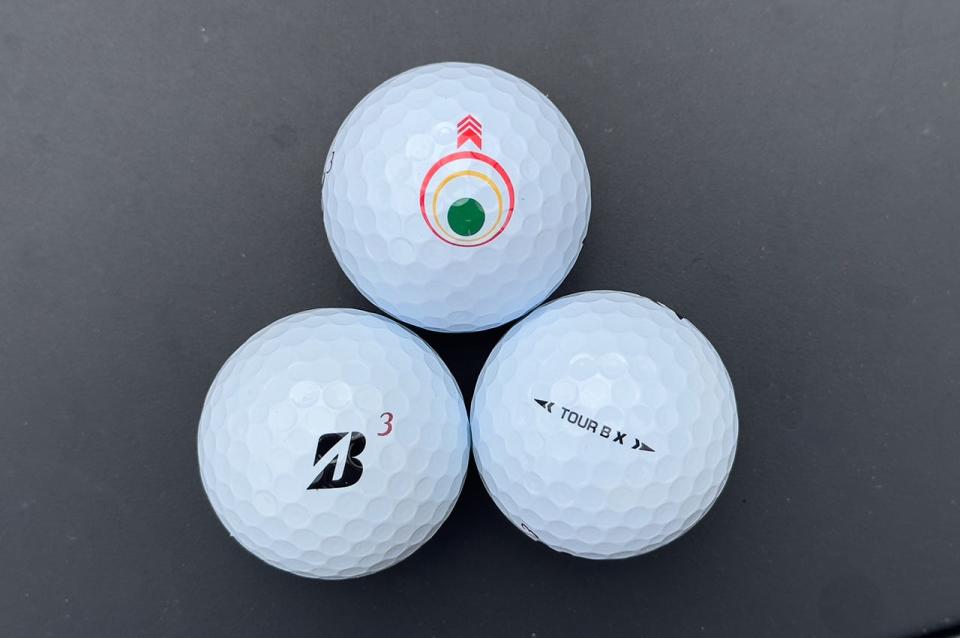
A “fitting” in golf is one of the best ways amateur golfers can fine tune their games in the search for lower scores, especially when paired with lessons.
But while driver and iron fittings are common, one element is often overlooked, and it’s the only piece of equipment used in literally every swing: the golf ball.
A “fitting” is when a player brings in their clubs to be hit against other brands in an effort to use data and insight to find what is best suited to their specific swing. So if Golfer A went in for a driver fitting, he or she would bring in a driver, learn some key numbers (distance, spin rate, launch height, ball flight, etc.) and then hit other brands’ drivers to see what works best, considering each has different specifications and technology.
These fittings can take place at some golf courses, some brand facilities, sites specifically geared toward fitting (like Club Champion), at retailers (like Golf Galaxy and others) or where you get lessons (like GolfTec).
But finding the right golf ball can also have a significant impact on your game. It’s why a golf ball fitting, many experts will argue, shouldn’t be overlooked. Not all golf balls are made the same.
Sam Fu, Bridgestone Golf’s master fitter, has worked with some of the game’s top pros (Tiger Woods has used Bridgestone golf balls) to amateurs hoping to find some improvement (that’s you and me). He knows about as well as anyone how eye-popping some of the numbers can be when the equipment is all fit to an individual swing, golf ball included.
Fu will also be on site during the 2024 Kaulig Companies Championship at Firestone Country Club as part of the Bridgestone Golf Driving Range Experience, where tournament attendees can hit three drives on Firestone’s tournament driving range that is utilized by the pros. Participants will also experience Bridgestone Golf’s OTTO golf ball fitting technology to see which ball best fits their game, and can do so between Thursday and Sunday of the tournament.
“There’s all kinds of golfers, and one golf ball can’t work for everybody,” Fu told the Beacon Journal.
Golf ball fitting is an overlooked potential benefit for amateur golfers
The idea is simple: if you want to improve, you’ll want to work on your swing. But why wouldn’t you also want your equipment to be best suited toward your swing? We all bring the clubhead to the ball in slightly different ways, so different clubs — and different golf balls — will be better for different people and worse for others.
You might need more spin off the tee, and your buddy might need less spin. If you both are using the same golf ball, there’s a chance one of you is losing some performance, depending on the ball’s specifications. So if you and your buddy need different things out of the ball, why wouldn’t you both use one tailored to your needs?
The other element in all of this is that golf balls can sometimes be compared to one another when manufacturers use robot texting, since it creates a statistical baseline. But when golfers apply their own individual swings, it brings unique factors into play. That means Golf Ball A might be the better ball in a vacuum, but it’s not necessarily the better ball for you depending on what you need off the tee, on the approach or around the greens.
“We don’t [play professional golf] for a living, so we definitely need all the help we can get and that’s what Bridgestone does,” Fu said. “Most manufacturers, they talk about how the ball performs based on a robot’s hits, and the robot hits the center every time. If we have a robot hitting balls, that driver has a perfect circle in the middle. My driver doesn’t look like that.”
The Monster 16th at Firestone CC: My adventure on the 667-yard hole
This leads to one of the clearest examples of why a fitting can have such a positive impact for golfers, whether it’s clubs or the ball. If a pro came in and hit a bunch of shots, the wear pattern on a driver or an iron would probably look like one clean circle. But most amateurs will hit their shots all over the face of the club.
That raises the question for many golfers: should they be playing the exact same ball as the pros? In many cases, testing will show, that answer is probably no. Some golf balls are geared toward absolute peak performance in many areas, but might have a harder feel. A golf ball with a softer feel, or a different core or cover, might be more forgiving on off-center hits, which for many amateurs could be beneficial as they try to lower their scores and/or their handicap. It might mean fewer yards lost on off-center hits, or an errant shot might not go nearly as off target.
Because a fitting will be accompanied by real-time feedback in the form of data, the results can be eye-popping.
The difference in how a golf ball might react to different swings is also why Fu and many others in the sport will urge amateur golfers to not only figure out what works best for their swing, but to stick with that one ball rather than switch from round to round or even hole to hole.
“Yeah, so if you talk to most amateur golfers, they think a golf ball is a golf ball, it doesn’t really matter,” Fu said. “A lot of people say they play whatever ball they find in the woods. They don’t realize every golf ball is different. Some have urethane covers … some are firmer, some are softer, some will react differently around the greens. That’s why if you don’t play one kind of golf ball, you might never see consistency.”
It also comes down to getting…







